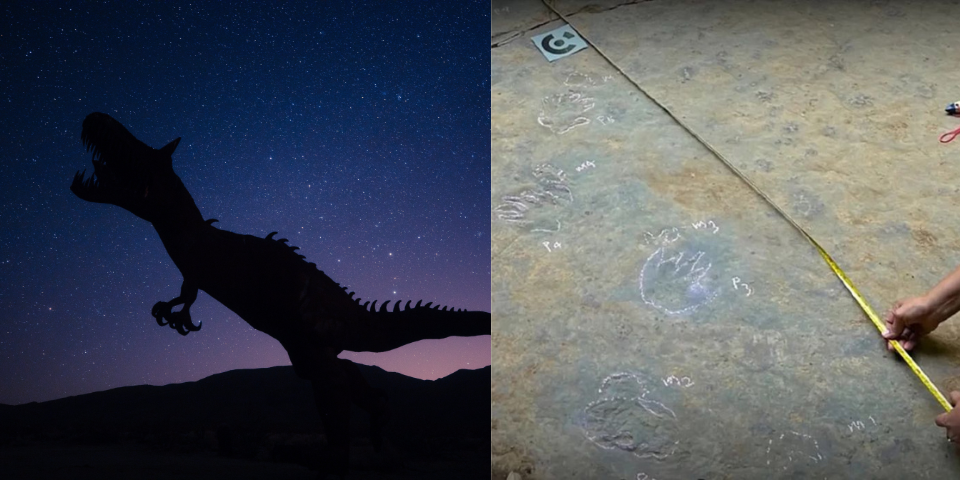Thailand's Department of Mineral Resources has made a groundbreaking discovery of prehistoric animal footprints, estimated to be 225 million years old, at the Tat Yai waterfalls located between the boarders of Phetchabun’s Nam Nao district and Khon Kaen’s Phu Pha Man district.
The department made a statement on its official Facebook page, noting that the footprints belonged to 5 different species.
Among them are 'theropods' (bipedal meat-eating dinosaurs), 'sauropods' (long-necked dinosaurs), and 'ornithopods' (a group of large herbivores that include the “duck-billed” hadrosaurs).
The tracks are very well-preserved, revealing details such as toes, claws, and soles of the dinosaurs’ feet.
Further study is most definitely within plans to determine the species which produced the footprints.
The tracks are from the late Triassic period (252-201 million years ago). During this time, the Earth’s continents were all merged into one supercontinent, Pangaea.
The discovery of these footprints will provide new insights into the dinosaur species that once roamed Southeast Asia during this time.
The rich fossils hidden away in Thailand have just begun to be discovered in recent years. This includes an extinct alligator and the 8-meter-long predator Siamraptor. There is much more to be seen!

Skull of extinct Alligator Munensis found in Mun River, Thailand. IMAGE: Sci. News
Understanding the Late Triassic dinosaurs in Thailand could help fill gaps in paleontologists’ knowledge of how dinosaurs in Asia evolved.
The best evidence of dinosaurs in Thailand comes from fossil footprints.
Some of the earliest tracks have been discovered as early as the Early Cretaceous (145-100.5 million years ago) and are about 100 million years younger than this newly uncovered one.
Those early tracks include tracks at the Phra Wihan Formation and the Phu Phan Formation.
As of now, the authorities will be working with local agencies to conduct more detailed exploration and documentation. They have to move fast before the rainy season hits the country and may potentially wash away and destroy any remaining markings.
These markings will largely contribute to academic researches in the field of biology and geology.
Hey there! Here's what others are currently reading:
Phu Kradueng National Park’s Cable Car Project Put on Hold As Thai Government Weighs Pros & Cons
4 Popular Folktales from Thailand That You Probably Don't Know
Embracing Serenity Underneath the Full Moon: Loi Krathong is One of Thailand’s Largest Festivals.














